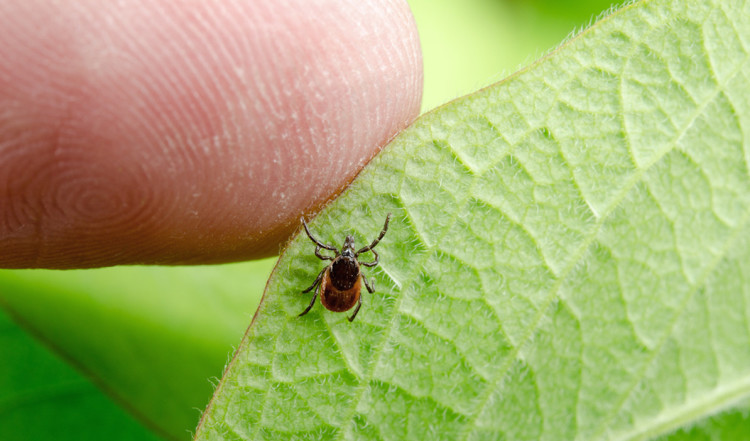
Lyme time: what your family needs to know
I’ve spent most of this summer pushing IV antibiotics into my husband’s PICC line and caring for him as he struggles with cardiac complications of Lyme disease. When friends hear this, they ask where we went camping–hopeful they can avoid his terrifying situation by sticking close to the city. The truth is that deer ticks wander around Pittsburgh too. My husband was likely bitten in our backyard.
A 2013 study of deer ticks from Allegheny County found 34% were infected with Borrelia burgdorferi, the bacteria that causes Lyme disease. Andrew Nowalk, an infectious disease pediatrician specializing in Lyme disease at Children’s Hospital of Pittsburgh of UPMC, says the highest rates of Lyme disease are in children, but that everyone who spends time outdoors–even in the city–should be aware of Lyme disease.
Recognizing Lyme

Lyme disease usually starts with a bull’s-eye rash and flu-like symptoms such as fatigue, chills, fever, headache, muscle or joint aches and swollen lymph nodes. In children, Nowalk says the most common symptoms are the Lyme disease rash, swelling of a single joint (usually the knee) and neurological symptoms. He advises parents to watch for just one knee, hip or elbow swelling persistently; or else Bell’s palsy, where one side of a child’s face might sag. Of note, the CDC says that 20-30% of individuals infected with Lyme do not get the characteristic rash.
Since many people who contract Lyme disease never notice the tick that bit them, do not hesitate to seek care if you or your family has these symptoms, even if you weren’t aware of getting bitten. Unsure about what a deer tick looks like? Check out this guide to tick identification.
Treating Lyme
Left untreated, Lyme disease can lead to serious complications like chronic arthritis and even neurologic or cardiac problems. Luckily, Lyme disease is very treatable with antibiotics.
Nowalk advises a single dose of Doxycycline as a preventative treatment for patients (including small children) after finding an attached, engorged deer tick on their bodies.
Once a patient develops Lyme disease, “you can kill it with antibiotics,” Nowalk says. “Sometimes patients still feel very sick even after the bacteria has been killed, and we expect this because it takes the body some time to heal after it’s been damaged by infection. Almost all patients are going to do well with antibiotic treatment.”
After several weeks of IV and then oral antibiotics, even my husband is starting to feel like himself again. His doctors anticipate he’ll feel like new by summer’s end … but he’s still just as susceptible to catching Lyme again. It’s important that everyone take precautions.
Preventing Lyme
Nowalk directs all of his patients to the Centers for Disease Control and Allegheny County Health Department websites for information about tick precautions, removal diagrams and information about Lyme disease.
These sites advise using deep woods-style insect repellent containing 20-30% DEET and treating shoes and clothing with a repellent containing Permethrin. Since deer ticks are present in every county in Pennsylvania, Nowalk suggests a full body check after children have spent the day outdoors. In addition to the CDC pointers for tick checks, Nowalk advises parents to carefully study children’s hairlines because “this is the easiest place to miss a tick on most kids.”
Nowalk says he is “not ecstatic” about the rapidly increasing prevalence of tick-borne illness in our area, but is working to educate physicians and families to watch for signs of this treatable disease.
Allegheny County Health Department director Dr. Karen Hacker reassures us, “If you remove a tick within 24 hours, your chance of getting Lyme disease is extremely small.”
Featured photo: Deer tick causing Lyme disease, Photo by PHOTO FUN